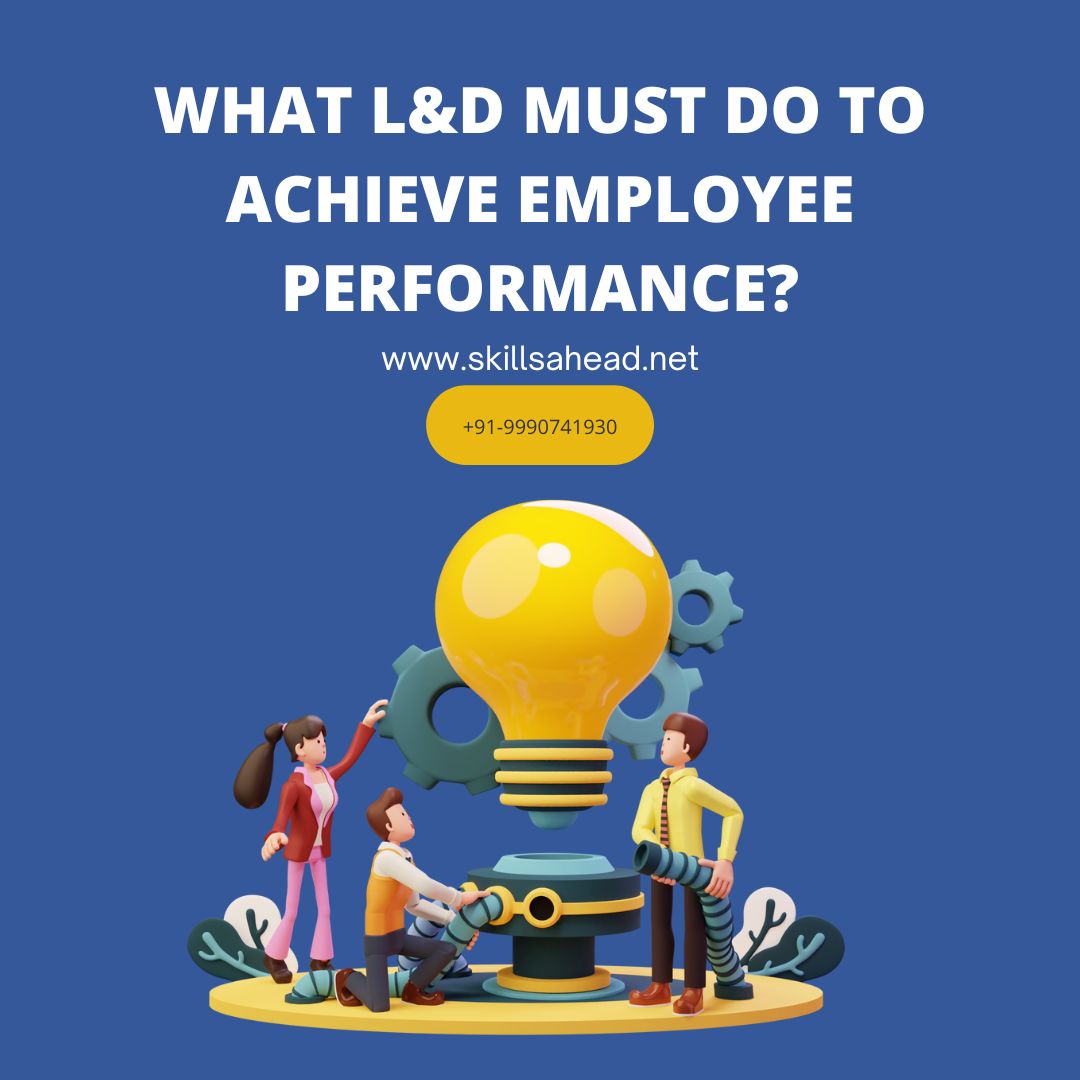What L&D must do to achieve high employee performance
What L&D should do to achieve the best employee performance?
To achieve the best employee performance, L&D (Learning and Development) departments can focus on the following strategies:
- Identify Training Needs: Conduct regular assessments to identify skill gaps and training needs within the organization. This can be done through performance reviews, surveys, and discussions with managers and employees. By understanding the specific areas where employees require development, L&D can tailor training programs accordingly.
- Develop Comprehensive Training Programs: Design training programs that align with the organization’s goals and address identified skill gaps. Incorporate a variety of learning methods, such as instructor-led training, e-learning modules, on-the-job training, and workshops. Ensure that the training programs are interactive, engaging, and relevant to the employees’ roles and responsibilities.
- Focus on Continuous Learning: Encourage a culture of continuous learning within the organization. Provide employees with access to a variety of learning resources, including online courses, webinars, books, and industry conferences. Support employees in pursuing certifications and professional development opportunities. Foster a learning mindset that promotes ongoing growth and skill enhancement.
- Offer Personalized Learning Paths: Recognize that each employee has unique learning preferences and career aspirations. Provide personalized learning paths that allow employees to choose training programs based on their individual needs and interests. This approach enhances engagement and motivation, as employees feel empowered to take ownership of their professional development.
- Leverage Technology: Embrace technology-driven learning solutions to enhance the effectiveness and accessibility of training programs. Implement learning management systems (LMS) to deliver online courses, track employee progress, and provide self-paced learning options. Utilize mobile learning applications and microlearning modules to deliver bite-sized, easily digestible content that can be accessed anytime, anywhere.
- Foster a Supportive Learning Environment: Create an environment that encourages learning and development. Provide resources, tools, and platforms for employees to collaborate, share knowledge, and learn from each other. Encourage mentoring and coaching relationships within the organization to support employee growth and skill development. Recognize and reward employees who actively participate in learning initiatives.
- Measure Training Effectiveness: Regularly evaluate the effectiveness of training programs to ensure they are delivering the desired outcomes. Use metrics such as employee performance improvements, skill mastery, and feedback from participants to assess the impact of training. Gather feedback from managers and employees to identify areas for improvement and make necessary adjustments to future training initiatives.
- Align Learning with Performance Management: Integrate learning and development initiatives with the organization’s performance management system. Ensure that employees’ development goals are aligned with their performance objectives. Provide opportunities for employees to apply newly acquired skills and knowledge in their day-to-day work. Link training outcomes to performance evaluations and career advancement opportunities.
- Encourage Continuous Feedback and Coaching: Establish a culture of continuous feedback and coaching. Provide managers with the tools and training to effectively coach and mentor their teams. Encourage ongoing dialogue between managers and employees to discuss progress, provide constructive feedback, and identify areas for further development. Regular feedback helps employees stay motivated, engaged, and focused on improving their performance.
- Support Leadership Development: Invest in leadership development programs to nurture future leaders within the organization. Provide training and mentoring opportunities for employees who show leadership potential. Develop programs that focus on essential leadership skills such as communication, decision-making, problem-solving, and team management. Effective leadership is key to driving high-performance teams and fostering a culture of excellence.
By implementing these strategies, L&D departments can contribute significantly to improving employee performance, enhancing skill sets, and fostering a culture of continuous learning and growth within the organization.
For more details on related training programs please email us <info@skillsahead.net>


